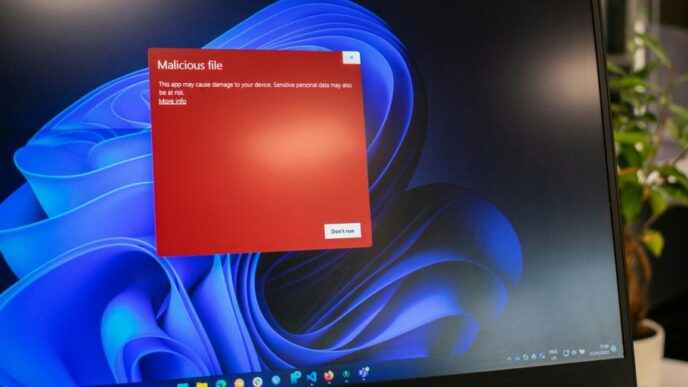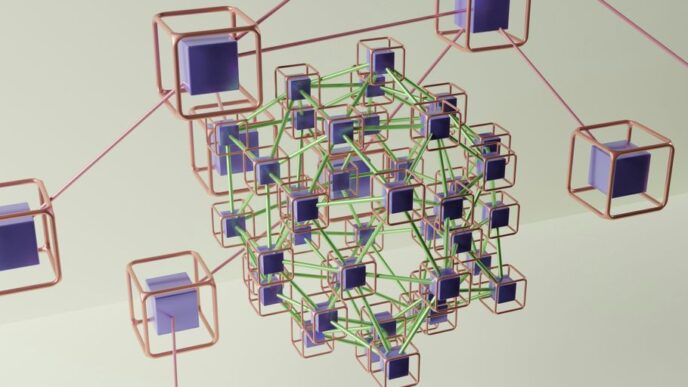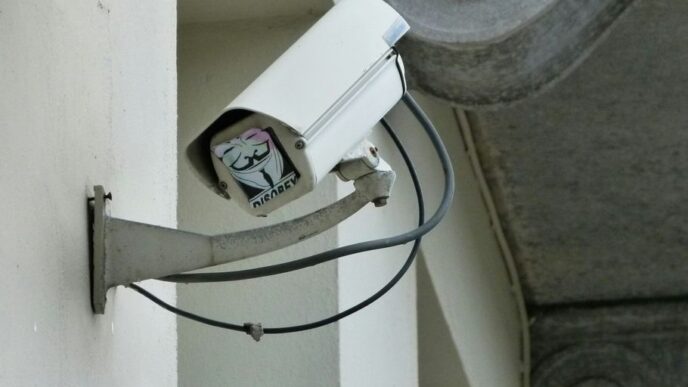In today’s digital world, keeping things safe online is super important. Threats out there keep changing, so our ways of protecting ourselves need to change too. That’s where continuous penetration testing comes in. It’s not just a one-time check; it’s like having a constant lookout for any weak spots in your systems. This method mixes smart automated tools with the sharp eyes of human security pros. This way, any problems get found and fixed fast. It’s all about making your online defenses strong and ready for anything.
Key Takeaways
- Continuous penetration testing means always checking your systems for weak spots, not just once in a while.
- It uses both computer tools and human experts to find problems.
- This approach helps fix security issues quickly, making your systems safer.
- It’s better than old-school testing because it keeps up with new threats.
- Doing this regularly helps reduce the chance of bad security incidents.
Understanding Continuous Penetration Testing
In today’s world, cyber threats change fast. Businesses need to stay alert with their cybersecurity. Companies used to do penetration testing once or twice a year, but that’s not enough anymore against today’s attacks. That’s where continuous penetration testing comes in. It’s a way to find weaknesses that hackers can use.
Proactive Security Measures
Instead of just checking your security once in a while, continuous penetration testing is like having someone watch your back all the time. It’s a way to find problems early and fix them before they cause trouble. It helps you stay ahead of new threats and keep your systems safe.
Dynamic Security Landscape
Think of your IT systems like a garden. Things are always changing – new plants grow, old ones die, and weeds pop up. Continuous penetration testing helps you keep an eye on everything. It adapts to changes in your systems and the threats they face. This means you’re always ready for whatever comes your way. It evolves with emerging threats, ensuring that your defenses are always robust and up-to-date.
Automated Tools and Human Expertise
Continuous penetration testing uses both computers and people. Automated tools can quickly scan your systems for common problems. But, people are still needed to understand the bigger picture and find more complex issues. By combining these two, you get the best of both worlds. This ongoing process integrates both automated tools and human expertise to ensure vulnerabilities are identified and addressed swiftly, enhancing your organization’s overall resilience.
How Continuous Penetration Testing Works
Okay, so you’re probably wondering how this whole continuous penetration testing thing actually works, right? It’s not just some magic security fairy sprinkling protection dust everywhere. It’s a structured process, blending automation with good old-fashioned human brainpower. Think of it as a security system that’s always on, always learning, and always adapting. It’s about simulating attacks to find weaknesses before the bad guys do.
Automated Monitoring and Real-Time Alerts
First off, you’ve got the automated part. This involves setting up tools that constantly scan your systems – websites, applications, networks, the whole shebang. These tools are like tireless security guards, always on the lookout for anything suspicious. They’re programmed to identify common vulnerabilities, misconfigurations, and other potential entry points for attackers. When something fishy is detected, the system sends out real-time alerts. Think of it like a burglar alarm for your digital assets. This allows for quick responses to potential threats. It’s like having a cybersecurity strategy that never sleeps.
Human Oversight and Remediation Recommendations
But here’s the thing: automation can only take you so far. That’s where the human element comes in. Cybersecurity experts analyze the alerts generated by the automated tools, sifting through the noise to identify genuine threats. They can spot complex attack patterns that a machine might miss. More importantly, they provide remediation recommendations – specific steps you can take to fix the vulnerabilities. It’s not enough to just find the problem; you need to know how to solve it. These experts provide reports with detailed information and actionable advice.
Follow-Up Testing for Vulnerability Resolution
Once you’ve implemented the recommended fixes, it’s time for follow-up testing. This is where you verify that the vulnerabilities have actually been resolved. The automated tools rescan the systems to confirm that the weaknesses are no longer present. It’s like double-checking that you’ve locked all the doors and windows after a break-in attempt. This step ensures that your systems are truly secure and that the remediation efforts were effective. This continuous loop of testing and fixing helps to improve your organization’s overall resilience against attacks. It’s about building a security posture that’s constantly evolving and improving. This helps keep your systems effective in defending against modern threats.
Benefits of Continuous Penetration Testing
Continuous penetration testing offers a bunch of advantages over traditional, one-off assessments. It’s not just about finding problems; it’s about building a stronger, more resilient security setup. Let’s look at some key benefits.
Reduced Risk of Security Incidents
The biggest win is a lower chance of getting hit by a security breach. Continuous testing helps catch vulnerabilities early, before attackers can exploit them. It’s like having a security guard who’s always on patrol, spotting potential problems before they turn into real trouble. This proactive approach can save you from costly downtime, data loss, and reputational damage. It’s way better to find and fix weaknesses yourself than to have a hacker find them for you.
Improved Security Posture
With continuous penetration testing, your security isn’t a one-time thing; it’s always improving. You get a clearer picture of your security posture at any given moment. Regular testing means you’re constantly identifying and addressing weaknesses, making your systems more secure over time. It’s like going to the gym regularly – you’re always working to get stronger and more resilient. Plus, it helps you keep up with new threats and vulnerabilities as they emerge. This ongoing process makes your defenses stronger and more adaptable.
Cost-Effective Long-Term Security
While setting up continuous penetration testing might seem like an investment, it can actually save you money in the long run. Think about it: the cost of a major security breach can be huge, including fines, legal fees, and damage to your reputation. Continuous testing helps you avoid these costs by finding and fixing vulnerabilities before they can be exploited. It’s like buying insurance – you hope you never need it, but it’s there to protect you when things go wrong. Plus, continuous testing can help you meet compliance requirements, which can also save you money on penalties and fines. It’s a smart investment in your long-term security and financial well-being.
Traditional Versus Continuous Penetration Testing
Snapshot Versus Dynamic Assessment
Okay, so picture this: traditional penetration testing is like taking a single photo of your house to check for damage. You get one shot, and that’s it. If something changes the next day – say, a window gets broken – the photo is already outdated. Continuous penetration testing, on the other hand, is like having a security camera that’s always recording. It’s constantly watching for vulnerabilities and changes, giving you a real-time view of your security posture. It’s a dynamic assessment, not just a one-time thing.
Adapting to Evolving Threats
The cyber world moves fast. Really fast. What was a secure system yesterday might be vulnerable today. Traditional pentesting, with its scheduled assessments, can’t keep up. It’s like using an old map in a new city. Continuous penetration testing adapts to emerging threats as they appear. It’s always learning and adjusting, ensuring your defenses are up-to-date. Think of it as having a security team that’s constantly researching and updating its knowledge of the latest attack methods.
Integration with Modern Development Cycles
Modern software development is all about speed and agility. DevOps teams are constantly pushing out updates and new features. Traditional pentesting often clashes with this rapid pace, creating bottlenecks and delays. Continuous penetration testing integrates smoothly with these modern development cycles. It’s like having a security expert embedded within the development team, providing real-time feedback and ensuring that security is built in from the start. This helps create a security-first mindset within the organization. It’s not just about finding vulnerabilities; it’s about preventing them in the first place.
Top Tips for Effectively Adopting Continuous Penetration Testing

So, you’re thinking about getting into continuous penetration testing? Smart move! It’s not just about running some scans and calling it a day. It’s about building a real, living security system. Here’s how to do it right:
Setting Clear Objectives and Investing in the Right Tools
First things first: what do you actually want to get out of this? Are you trying to reduce the time it takes to fix vulnerabilities? Maybe you want to catch more threats before they become problems? Figure out your goals before you spend a dime. Then, find the tools that fit those goals. Don’t just grab the shiniest new thing; make sure it plays nice with your current setup. Think about security posture and how the tools will help improve it.
Building a Skilled Team and Fostering Collaboration
Tools are great, but they’re useless without people who know how to use them. You need a team that can understand the data, spot the real threats, and actually fix the problems. And it’s not just the security team! Get your developers, operations folks, and everyone else involved. Security is everyone’s job, after all. This is where you can really build a security-first mindset.
Regularly Reviewing and Adapting Strategies
The threat landscape is always changing, so your testing can’t stay the same. You need to keep an eye on new threats and update your methods accordingly. Think of it like this:
- What worked last year might not work today.
- New vulnerabilities pop up all the time.
- Attackers are always finding new tricks.
So, regularly review your strategies and make sure you’re still on the right track. Continuous penetration testing is not a one-time thing, it’s a number of vulnerabilities that need to be addressed.
Integration with Attack Surface Management
It’s a fact: the area we need to defend is always changing. What we think of as our "attack surface" is never really set in stone. That’s where Attack Surface Management (ASM) comes in. It helps us keep up with all the moving parts and make sure we know what’s out there. ASM is key for understanding what needs the most protection.
Understanding the Evolving Attack Surface
Think of your attack surface as everything that’s exposed to the internet and could be a target. This includes websites, cloud services, and even employee devices. The problem? It’s always changing! New services get added, old ones get updated, and sometimes things get left behind. Without a good handle on your security threats, you’re basically flying blind. ASM gives you the visibility you need to see the whole picture and prioritize what matters most.
Continuous Attack Surface Discovery
ASM isn’t a one-time thing. It needs to be continuous. That means constantly scanning and looking for new assets and potential vulnerabilities. This is where automation really shines. You can set up tools to automatically discover new assets as they come online. This way, you’re not relying on manual processes that can easily miss things. It’s like having a Darwin Attack Platform that never sleeps, always watching for changes.
Mapping External Assets and Cloud Services
One of the biggest challenges is keeping track of everything that’s outside your direct control. This includes cloud services like AWS, Azure, and Google Cloud, as well as any third-party services you use. You need to know what data is stored where, who has access, and what the security settings are. Mapping these external assets is crucial for understanding your overall risk. It’s not enough to just know they exist; you need to understand how they’re configured and how they could be exploited. This helps you focus your penetration testing efforts on the areas that pose the greatest risk.
Process of Continuous Penetration Testing
Continuous penetration testing isn’t just a one-off thing; it’s a cycle. It’s about setting up a system that constantly checks for weaknesses, simulates attacks, and then helps you fix those problems. Let’s break down how it usually works.
Defining Scope and Automation Setup
First, you need to figure out what you’re going to test. Is it your website, your network, or a specific application? Defining the scope is key. Once you know what to test, you set up the automated tools. These tools constantly scan your systems for known vulnerabilities. Think of it like setting up a security camera system that’s always watching for intruders. This might involve existing vulnerabilities in your code or open ports on your network.
Attack Simulation and Vulnerability Identification
Next, the system starts simulating attacks. This could be anything from trying to inject malicious code to see if your website is vulnerable to SQL injection, to trying to break into your network through various entry points. The goal is to see how well your defenses hold up against real-world attacks. The automated tools flag any vulnerabilities they find. It’s like a practice run for a real cyberattack, but you’re in control.
Reporting and Remediation
Once vulnerabilities are found, the system generates reports detailing the issues and how to fix them. These reports give your team the information they need to patch the holes and strengthen your defenses. After the fixes are implemented, you run follow-up tests to make sure the vulnerabilities are actually gone. This ensures that your security posture is constantly improving and that you’re staying ahead of potential threats.
Wrapping It Up
So, when you look at it, continuous penetration testing isn’t just some fancy new thing; it’s really about being smart with your security. Instead of just checking things once in a while, this approach keeps an eye on stuff all the time. It helps you find problems fast, before they turn into big headaches. This way, your systems stay strong, and you can feel better knowing you’re doing what you can to keep things safe. It’s a practical way to handle today’s online risks, making sure your defenses are always ready.
Frequently Asked Questions
What is continuous penetration testing?
Continuous penetration testing is like having a security guard always on duty, constantly checking your systems for weak spots. Unlike old-school testing that’s just a one-time check, this method keeps looking for problems all the time, using both smart computer programs and real security experts.
Why is continuous penetration testing important for my business?
It helps you find and fix security holes much faster, often before bad guys can use them. This means less risk of your data getting stolen or your systems breaking down. It also helps your company stay safe as new threats pop up and makes your security stronger over time.
How does continuous penetration testing actually work?
It uses automated tools to scan your systems all the time. When these tools find something suspicious, they alert a team of human experts. These experts then dig deeper, figure out the problem, and tell you how to fix it. After you make changes, they check again to make sure everything is safe.
What’s the difference between traditional and continuous penetration testing?
The main difference is timing. Traditional testing is like taking a single photo of your security; it’s only good for that moment. Continuous testing is like a live video feed, always showing you what’s happening. This is better because computer systems and threats are always changing.
How can my company start using continuous penetration testing effectively?
Start by knowing what you want to protect and why. Get the right tools that work well with your current systems. Make sure your team knows what they’re doing and encourage them to work together. And always be ready to change your plans as new threats appear.
How does continuous penetration testing help with managing my ‘attack surface’?
It helps you see all the places where an attacker might try to get in, not just the obvious ones. By constantly checking your entire digital footprint, including new devices or cloud services, continuous testing makes sure no potential entry points are missed, giving you a full picture of your risks.














